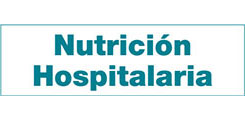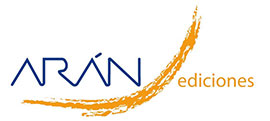Trabajo Original
Diagnosis of night blindness through standardized interview and electroretinography
Sílvia Pereira, Carlos Saboya, Patrícia Jesus, Sabrina Pereira da Cruz, Andréa Ramalho
 Número de descargas:
106225
Número de descargas:
106225
 Número de visitas:
6902
Número de visitas:
6902
 Citas:
0
Citas:
0
Compártelo:
Objective: To compare the diagnosis of NB through the use of the standardized interview of the World Health Organization/Pan American Health Organization (WHO/PAHO) with electroretinography, and also to evaluate the association of these diagnoses with serum concentrations of retinol in class III obesity individuals. Methods: Adult patients of both genders, in the 20-60 age group, with BMI ≥ 40 kg/m² were studied. NB was diagnosed through electroretinography and the standardized interview validated by the WHO/PAHO. Serum level of retinol was quantified by the HPLC-UV method, and VAD was diagnosed when levels were <1.05 µmol /L, and severity was also evaluated. Statistical analysis was carried out through the Statistical Package for the Social Sciences, version 21.0 (p < 0.05). Results: Mean BMI was 44.9 11.8 kg/m², and a negative correlation was found in serum levels of retinol (p= 0.01). The prevalence of VAD, according to the serum concentrations of retinol, was 14%, and of this percentage 23.3% had NB according to the standardized interview, and 22.0% according to electroretinography. NB diagnosed by both methods showed an association with VAD according to the serum concentrations of retinol. Of these individuals with NB, according to the standardized interview, 6.9% showed severe VAD, 10.3% moderate VAD and 82.8% marginal VAD. Conclusion: The standardized interview for the diagnosis of NB can be a good strategy to evaluate the nutritional status of vitamin A, and it is a simple, non-invasive and low-cost method.
Palabras Clave: Night blindness, serum retinol, electroretinography, class III obesity, vitamin A deficiency.
DOI: 10.1093/jn/132.7.1909
DOI: 10.3390/nu9090989
DOI: 10.1016/S0735-1097(97)00188-5
DOI: 10.1590/S1415-52732007000100010
DOI: 10.1093/jn/131.6.1647
DOI: 10.1016/j.nut.2004.07.015
DOI: 10.1093/jn/132.9.2857S
DOI: 10.1093/ajcn/33.4.887
DOI: 10.1024/0300-9831.78.1.27
DOI: 10.1007/s11695-007-9361-2
DOI: 10.1007/s11695-011-0522-y
DOI: 10.1093/ije/27.2.231
DOI: 10.1093/ajcn/54.4.707
DOI: 10.1016/j.metabol.2008.09.022
DOI: 10.1016/j.bbalip.2011.06.004
DOI: 10.20960/nh.1630
Artículos Relacionados:
Trabajo Original: Reduction of vitamin A deficiency and anemia in pregnancy after implementing proposed prenatal nutritional assistance
Trabajo Original: Nutritional status of iron in children from 6 to 59 months of age and its relation to vitamin A deficiency
Trabajo Original: The role of prenatal nutrition assistance on the prevalence of night blindness in pregnant adults
Artículos más populares
Revisión: Inteligencia artificial generativa ChatGPT en nutrición clínica: avances y desafíos
ChatGPT y otras herramientas de inteligencia artif...
Revisión: Suplementación con micronutrientes y sus beneficios: ¿por qué y cuándo?
Introducción: los micronutrientes participan en la...
-
Licencia creative commons: Open Access bajo la licencia Creative Commons 4.0 CC BY-NC-SA
https://creativecommons.org/licenses/by-nc-sa/4.0/legalcode




